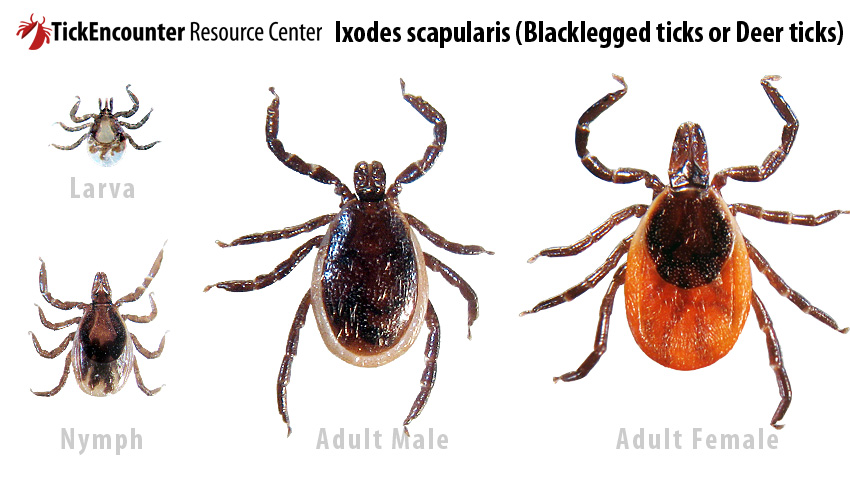There are 15 known species of ticks in Vermont. The blacklegged tick (Ixodes scapularis), more commonly known as the deer tick, is the most abundant tick in Vermont. The blacklegged tick is responsible for over 99% of all tick-borne diseases reported to the Vermont Department of Health. These ticks can transmit Lyme disease, anaplasmosis, babesiosis, Borrelia miyamoitoi disease, and Powassan virus disease.
.

- Eggs are laid in the spring
- Larvae hatch in late summer
- Nymphs emerge the following spring and early summer
- Adults emerge in fall (and following spring)
The above graph from the VT Department of Health demonstrates when each life stage of the blacklegged tick is most active. Larvae are active mid to late summer, nymphs are active in late spring and early summer, and adults are active in spring and fall.
Ticks "quest" to find a host. In typical conditions, ticks will quest from vegetation that is the perfect height to attach to their preferred host. Larval and nymphal ticks will quest in leaf litter and short vegetation targetting small rodents and adults will quest from taller vegetation looking for larger animals such as white-tailed deer.

Another common tick in Vermont is the American Dog Tick (Dermacentor variabilis). This tick is common April through September and is a common pest on dogs and cats.

More Information about Ticks


